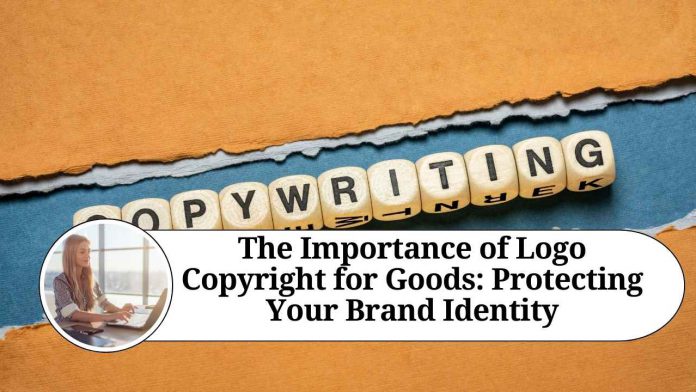Introduction
In today’s highly competitive business landscape, establishing a strong brand identity is crucial for success. A logo serves as a visual representation of your company, product, or service, and can evoke powerful emotions and associations in the minds of consumers. As you create and market your goods, it becomes essential to understand the significance of logo copyright and how it can safeguard your brand identity from infringement. In this blog post, we will explore the importance of logo copyright for goods and provide insights into the steps you can take to protect your brand.
Defining Logo Copyright:
Logo copyright refers to the legal protection granted to the creator of a logo. It grants exclusive rights to reproduce, distribute, display, and modify the logo to the copyright owner. By obtaining logo copyright, you can prevent others from using your logo without your permission, ensuring that your brand remains distinct and recognizable.
The Benefits of Logo Copyright:
- Protecting Brand Identity: Your logo is the visual embodiment of your brand. Registering for logo copyright ensures that your unique design is legally protected, preventing others from imitating or misusing it. This protection helps maintain the integrity of your brand identity and distinguishes your goods from competitors.
- Avoiding Confusion and Misrepresentation: Unauthorized use of your logo can lead to confusion among consumers, as well as potential damage to your reputation. By securing logo copyright, you gain the power to control how your logo is used, minimizing the risk of misrepresentation and protecting the trust you’ve built with your customers.
- Legal Recourse: In the unfortunate event of logo infringement, having copyright protection strengthens your legal position. Copyright registration provides evidence of ownership, making it easier to enforce your rights and seek remedies against infringers. This can include pursuing legal action, obtaining damages, or issuing cease and desist letters.
Steps to Protect Your Logo Copyright:
- Originality and Creativity: Ensure that your logo design is original and distinct from existing logos in your industry. Conduct thorough research to avoid unintentional similarities and create a logo that embodies your brand’s unique attributes.
- Creation and Documentation: Keep records of the logo creation process, including drafts, sketches, and design iterations. This documentation serves as evidence of your logo’s originality and can be valuable in establishing your copyright claim.
- Copyright Registration: While copyright automatically exists upon creation, registering your logo with the appropriate copyright office provides additional legal protection. In many countries, such as the United States, this step is necessary to file a lawsuit for infringement.
- Monitor and Enforce: Regularly monitor the marketplace for any unauthorized use of your logo. Implement a system to track potential infringements, both online and offline. If you identify unauthorized use, consult with legal professionals to take appropriate action to enforce your copyright.
Conclusion
Logo copyright plays a vital role in safeguarding your brand identity and protecting your goods from unauthorized use. By securing copyright protection for your logo, you can maintain the distinctiveness and integrity of your brand while gaining legal recourse against potential infringers. Remember to create original designs, document the creation process, register your copyright, and actively monitor for any unauthorized use. By taking these proactive steps, you can confidently establish and promote your brand while deterring infringement in the competitive marketplace.
Other Related Blogs: Section 144B Income Tax Act
Frequently Asked Questions (FAQs)
Q. What is logo copyright?
Logo copyright refers to the legal protection granted to the creator of a logo. It gives the copyright owner exclusive rights to reproduce, distribute, display, and modify the logo.
Q. Do I need to copyright my logo?
Copyright protection for your logo exists automatically upon its creation. However, registering your logo with the appropriate copyright office provides additional legal benefits, such as the ability to file a lawsuit for infringement and establish a public record of your copyright claim.
Q. How do I know if my logo is eligible for copyright protection?
To be eligible for copyright protection, your logo must meet the originality requirement, meaning it must be a creative work that is not a copy of an existing logo. It should be a unique expression of your brand identity.
Q. How long does logo copyright protection last?
In most countries, logo copyright protection lasts for the lifetime of the creator plus an additional period of 50 to 70 years after their death. The exact duration may vary depending on the country’s copyright laws.
Q. Can I use the copyright symbol (©) on my logo?
Using the copyright symbol on your logo is not mandatory. Copyright protection exists automatically upon creation, regardless of whether the symbol is displayed. However, including the symbol along with your logo can serve as a notice to others that your logo is protected by copyright.
Q. What should I do if I discover someone is using my copyrighted logo without permission?
If you find someone using your copyrighted logo without authorization, it is advisable to consult with a legal professional who specializes in intellectual property law. They can guide you through the process of enforcing your copyright, which may involve sending a cease and desist letter, pursuing legal action, or seeking damages.
Q. Can I modify my copyrighted logo without infringing on someone else’s copyright?
Modifying your copyrighted logo can be acceptable as long as the changes are significant enough to create a new and distinct logo. However, it is crucial to ensure that the modifications do not infringe on the copyrights of others. It is always advisable to seek legal advice if you are unsure about potential copyright infringement.
Q. Is logo copyright protection international?
Copyright protection varies from country to country. However, many countries have international agreements, such as the Berne Convention, which provide a level of copyright protection across multiple jurisdictions. It is important to understand the copyright laws of the countries in which you intend to use your logo.
Q. Can I copyright a logo that includes a trademarked symbol or design?
While you can obtain copyright protection for the original elements of your logo, including a trademarked symbol or design may require additional steps. Trademarks and copyrights protect different aspects of intellectual property, and it is advisable to consult with a legal professional to ensure compliance with both trademark and copyright laws.
Q. Can I sell or transfer the copyright of my logo?
Yes, as the copyright owner, you have the right to sell or transfer your logo copyright to another party. This can be done through a copyright assignment agreement, which legally transfers the rights and ownership of the logo from one party to another.




















